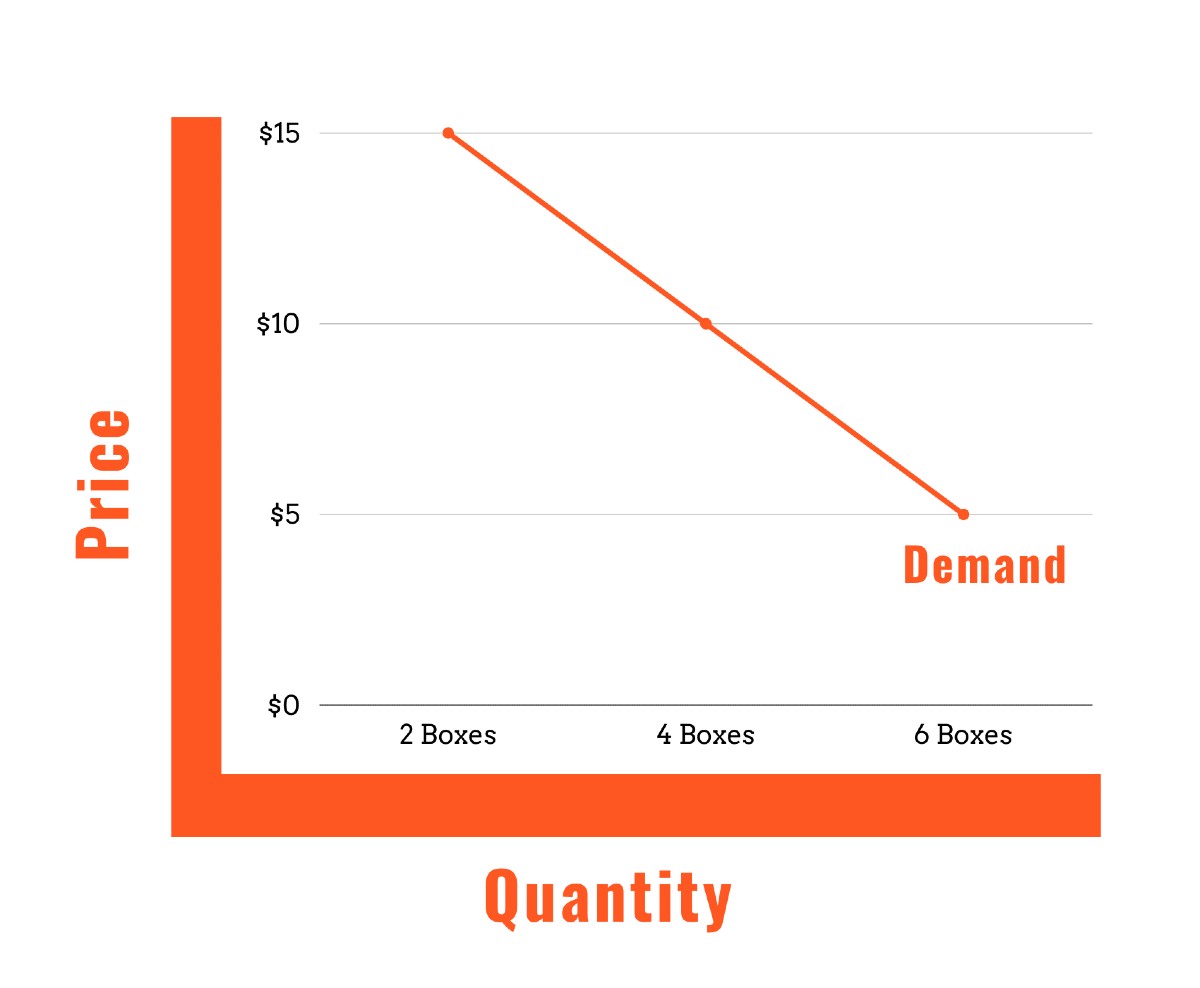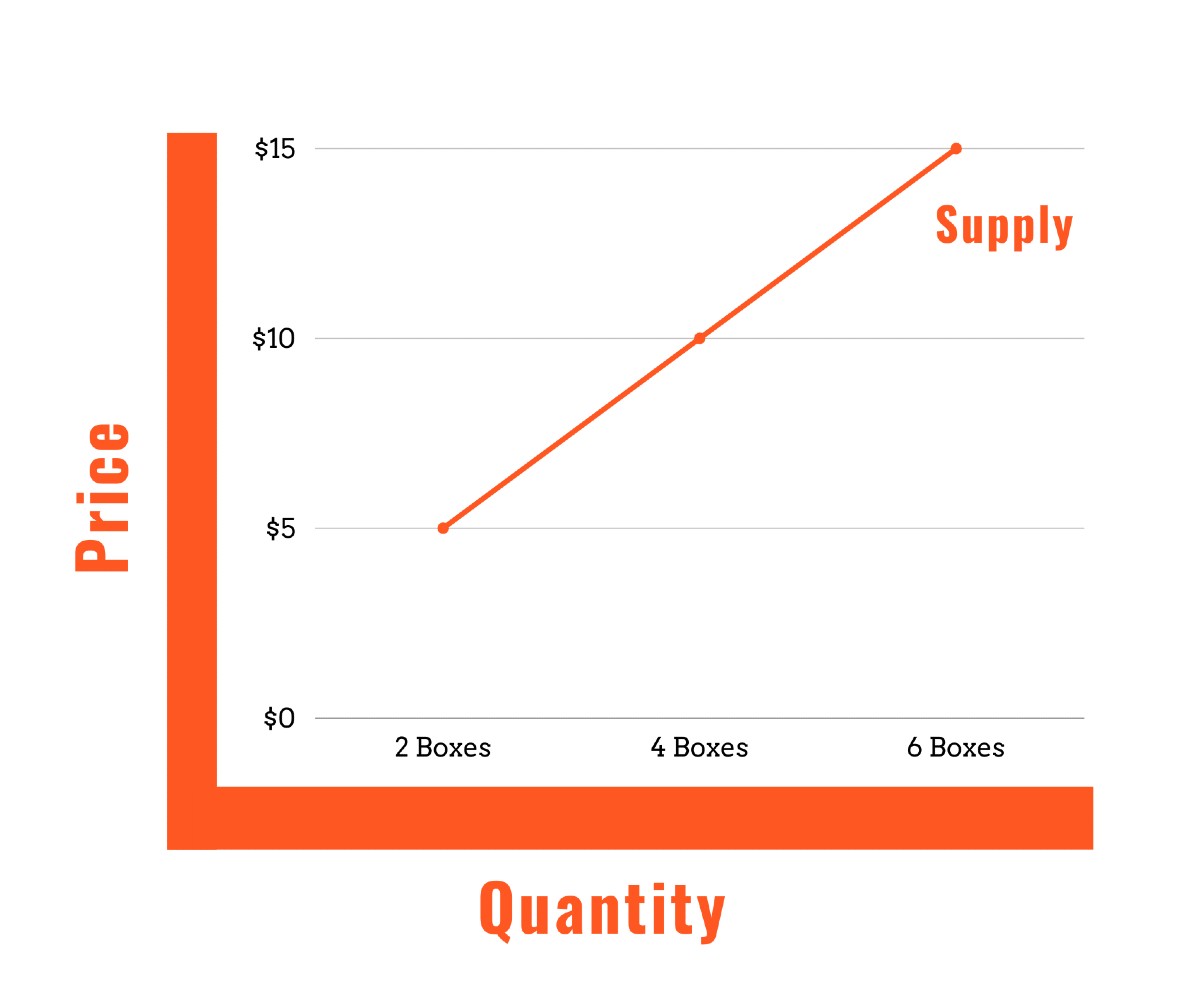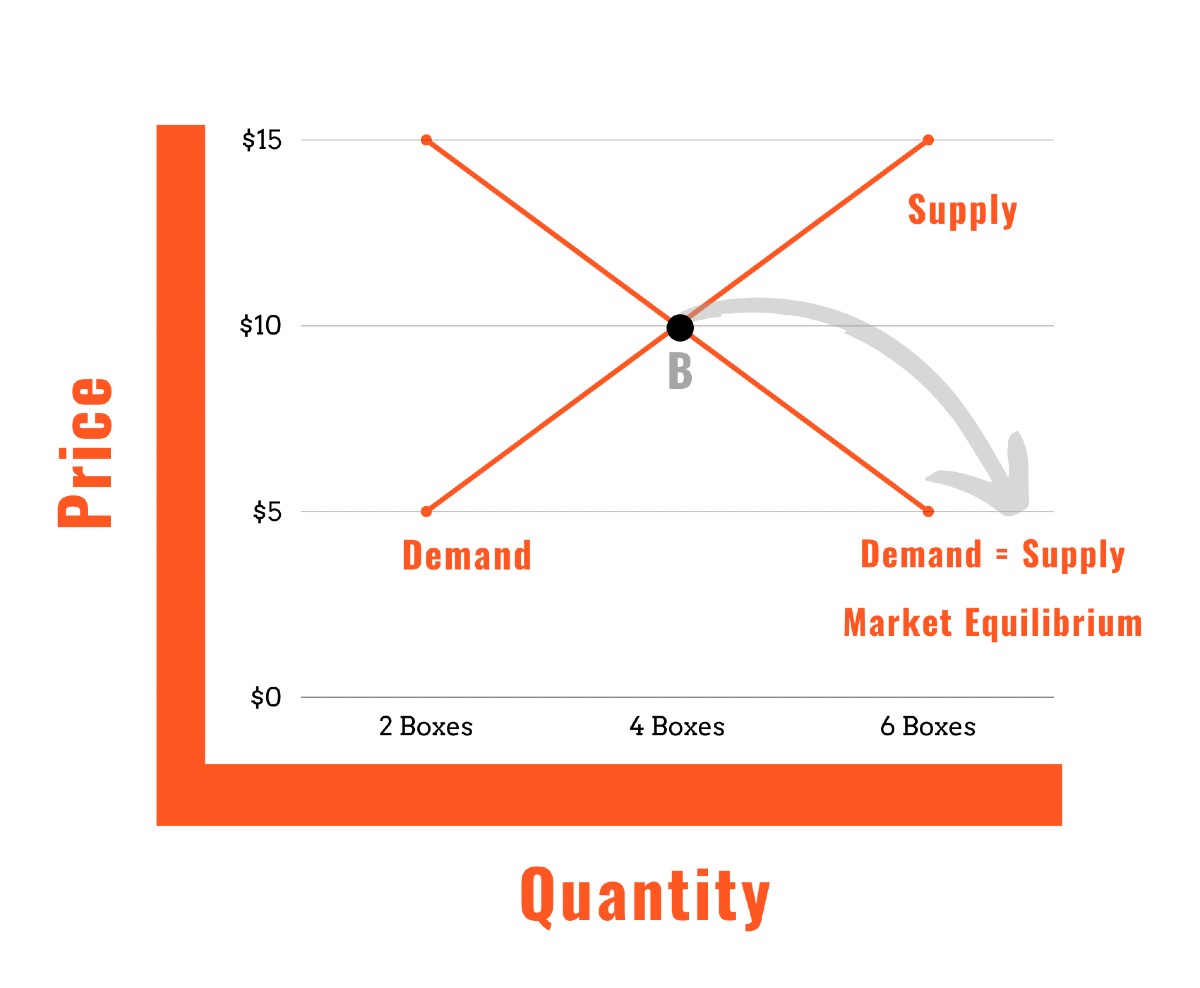Supply and demand form the relationship between the quantity of a product or a service that sellers wish to sell, and the quantity of a product or a service that consumers wish to purchase. These are the two economic forces that drive the desire of suppliers to produce and sell a particular product and the will of customers to consume that product.
As the price of a product goes up, suppliers wish to produce, supply, and sell that product more. On the other hand, as the price of any product rises, consumers refrain from purchasing it. This rising supply and diminishing demand of a product meet at a mutual point that marks the ideal selling price and quantity of that product to be sold. Supply and demand, together, therefore, form the base of any economic system.
Definition:
‘Supply and demand’ refers to the relationship between the ability or will of customers to purchase a particular product, commodity, or service and the ability or will of suppliers to produce and sell that particular product, commodity, or service.’
More easily, this concept sheds light on how the supply of a product is based on the customer demand. It talks about the quantity of any product or service that suppliers are willing to produce and sell in the market, using their limited resources. On the other hand, it talks about the quantity of a product or a service that consumers are willing to purchase or procure from the market, using their limited incomes.
This is an economic theory that drives the market equilibrium. This fundamental concept of economics explains how the price of a commodity is affected by the demand and supply of the customers and suppliers, respectively.
How are ‘Supply’ and ‘Demand’ inter-related?
To understand how this relationship works in an economy, let’s understand what ‘Supply’ and ‘Demand’ are.
Supply:
“Supply refers to the quantity that suppliers are willing and able to produce and sell in a market, at the prevalent market price.”
The two main words to note are ‘willing’ and ‘able’. Both of these aspects control the supply of any product within a market. Let’s understand it this way.
Example:
Suppose you own a poultry farm and the normal daily breed of your farm is 100 chickens and 1000 eggs. That being said, you can supply 100 chickens for consumption and can sell 1000 eggs every day. However, only 60 chickens and 700 eggs are sold per day on an average.
During the year-end, due to increased festivities, the demand for chicken and eggs in the market is usually higher. Due to increased demand, the prices also shoot up. To benefit from the high prices, you can sell all the 100 chickens and 1000 eggs, per day. Or on the contrary, you can decrease the chicken supply below the normal daily average, till the prices reach their peak. The decision of increasing or decreasing the chicken and egg supply depends upon your willingness.
However, due to your limited breeding capacity, you cannot supply more than 100 chickens and 1000 eggs each day, even if you are willing to. After a certain limit i.e. 100 chickens and 1000 eggs per day, the decision of increasing the supply no more depends upon your willingness, but on the breeding capacity of your farm.
Supply can be controlled by the suppliers up to a limit. However, some limitations are imposed by the scarcity of resources and therefore, the supply of a product cannot be increased beyond that limit.
Relationship between Supply and Price:
There exists a direct relationship between the supply and price of a product. Simply put, when the price of a product increases, the supply of the product increases and vice versa, provided that all other factors remain constant. The phenomenon is pretty simple to understand.
Example:
- If the market prices of cars observe an upward trend in an economy, the car manufacturers may find it as an excellent opportunity to make some good profit. They will, thus, manufacture and supply more cars in the market to sell them at higher prices. An increase in the price of a commodity, therefore, causes its supply to boost and vice versa.
Demand:
Demand refers to the quantity of a product or service that customers are willing and able to buy at the prevalent market price.
Demand is therefore the need, desire, and ability of customers to consume a product or a service. The demand for a product in a market can vary drastically for several factors. Here is an example to understand how demand works.
Example:
During winters, people need warm clothes, (sweaters, mufflers, jackets, etc.) and heaters. This need of consumers creates a demand for warm clothes and heaters within the market.
Similarly, after every new launch of a successive cellphone model, people desire to have their cellphones updated to the latest version. This desire among the customers creates a demand in the market for new cellphones.
Relationship between Demand and Price:
There exists an inverse relationship between the demand and price of a product. Simply put, when the price of the product increases the demand for a product decreases and vice versa, provided that all other factors remain constant.
Examples:
- Winter season boosts the need for warm clothes and heating equipment. Considering the seasonal trend, suppliers increase the prices of warm clothes and heaters to make higher profits. Most of the customers wouldn’t be able to afford such high prices, which ultimately decreases the demand for the product. Higher prices, therefore, lead to a fall in consumer demand.
- A sudden increase in the price of tea may pose a question mark on the affordability of some consumers. Resultantly, they may avoid buying tea till the prices of tea stabilize. An increase in the price of tea, thus, led to a decrease in its demand in the market. Similarly, a sudden decrease in the price of tea may attract consumers to shift to tea.
Understanding the relationship between supply and demand:
Supply and demand are the two most fundamental principles of an economic system and they always go hand in hand. These two key market forces settle the price of a commodity, by demonstrating the relationship between the quantity of that product that suppliers are willing to supply, and the quantity that consumers are willing to purchase.
Mechanism:
Suppliers usually make a profit by the combination of sale price and sale quantity. Upon launching a new product, if the company’s target profit is $5000/ per month, then this can be achieved in two ways. Either the company can set the price of the product to earn a profit of $500/per item and sell 10 items. Or the company can aim for selling 100 items by keeping a profit of $50/per item.
However, it might not always be possible for the company to produce a higher number of items and sell them at so low margins. At a lower price, the supplier produces and sells lesser products and vice versa.
The quantity and price of any product is, therefore, determined by the supplier and customer together. At a higher price, the supplier is more willing to sell a higher quantity. Whereas, the customer is less willing to purchase more at a higher price. Therefore, both the forces (demand and supply) begin to move in opposite directions. The price of a product falls, its demand rises, and supply falls.
Ultimately, a point is reached where the supplier’s supply at the given market price is equal to the consumer’s demand at that given price. This ideal sales point, where demand is equal to supply, is known as the point of Market Equilibrium.
Here is an example to understand better.
Example:
A shopkeeper offers a box of berries for $15. At this price, he wishes to sell 6 boxes daily, however at this price the consumer demand is for 2 boxes per day, only. To boost his sales, he decides to decrease the price to $10. As the price has fallen, he now wishes to sell only 4 boxes daily. At the price of $10, the customer demand is for 4 boxes.
Upon decreasing the price to $5, the shopkeeper is willing to sell 2 boxes daily. However, the customers are willing to purchase 6 boxes per day at the price of $5.
At which point is the market equilibrium achieved?
Graph 1:
Here is how the demand curve moves when the prices are lowered. Where price is demonstrated along the y-axis and quantity along the x-axis.

Explanation:
When the shopkeeper offered each box for $15, he could only fetch 2 sales per day. Upon decreasing the price to $10, he managed to sell 4 boxes. Plotting this on the graph we observe a line moving from the left to the right in a downward position. This shows how the demand increases when the prices fall.
Graph 2:
Here is how the supply curve moves when the prices are lowered. Where price is demonstrated along the y-axis and quantity along the x-axis.

Explanation:
The shopkeeper is willing to sell 6 boxes at the price of $15 daily. However, Upon the decreased price of $10 and $5, the supply is decreased to 4 and 2 boxes respectively. Plotting this on the graph we see a slope moving from left to right in an upward position.
Graph 3:
Plotting both the slopes (demand and supply) together on a graph, we see how the price is affected when the demand and supply move together.

Explanation:
Analyzing demand and supply together, we see a point of intersection between both the graphs. We can spot this at point B, where the quantity of boxes is 4 while the price of each box is $10. This point shows the perfect point of sales. At this point, the demand of customers is exactly equal to the supply of berry boxes. This is the point of Market Equilibrium.
Any price higher than $10 will decrease the consumer demand below 4 boxes each day, making the customers unable to pay the price. This might cause the in-stock berry boxes to rot, causing the shopkeeper a loss.
On the contrary, any price lower than $10 will cause the demand to boost but would cause the shopkeeper a loss and thus unwilling to supply. The price and quantity ($15 and 4 boxes), thus, fetched by the stretch of supply and quantity shows the point of market equilibrium.
This is how Supply and Demand work together to set the price and quantity of a product in the market, that consumers are willing to purchase, and suppliers are willing to supply.
Limitations of the concept of ‘Supply and Demand’:
While the concept of Supply and demand is easy to understand and goes with the logic, the reality is a little different. This law doesn’t originate from reality but an economic imagination. In reality, there can be several other factors influencing the supply and demand of a particular product. Let us discuss some of these.
1. Assumption based:
The Supply and demand framework is based on many assumptions. The law that ‘when prices rise, demand falls’, is based on the assumption of everything else being constant (constant consumer preferences, constant purchasing power, and constant price of everything else).
However, in reality, the demand for something may rise even if the price rises. This may be because that good is trending e.g. latest cellphone models. Or on the contrary, the demand for an item may see a downturn even if the prices are low for the reason of a cut in the income of the consumers.
Similarly, it might not be possible for the suppliers to increase the supply even if the prices have skyrocketed. They may not have sufficient resources (raw materials, factory space, labor, etc.)
2. Exceptional Circumstances:
The law of Supply and Demand don’t hold well in exceptional cases. The law of supply states that the quantity of supply should increase proportionately to the increase of price. However, if the supplier expects the prices to rise shortly, he would want to hold his stock till the prices reach their highest point, even if the prevalent prices are high. On the contrary, if he expects the prices to fall in the future, he would be willing to sell more stock even at a lower price.
3. Government policies:
In some countries, the market is not free but controlled by the government. The government fixes the price of some commodities or subsidizes the prices of some products, irrespective of the market demand of supply. In such cases, the price is not settled by the market equilibrium and thus the law of supply and demand fails to apply.
In addition to the above mentioned, there can be several other scenarios where the theory of demand and supply doesn’t work. Despite being appealing, the supply and demand graphs are deeply rooted in the illusion of a perfect economy. However, the real world is complex enough to be plotted on a graph without accounting for the economic changes, uncertainty, and other entrepreneurial manipulations.
Key Points:
To memorize how Supply and Demand drive an economy, the following points must always be remembered.
- ‘Supply’ represents the quantity of a product or service that suppliers are willing and able to sell within a market, at the prevalent price, provided that all other things remain constant. Demand, whereas, is the quantity of a product or service that customers are willing and able to purchase at the given market price, provided that all other things remain constant.
- ‘Supply and Demand’ refers to the relationship between the quantity that consumers are willing and able to buy and the quantity that suppliers are willing and able to sell, at the prevailing market price.
- When the price of a product rises, the demand for that product begins to fall. At the same time, with the increase in the price of a product, the supply of that product is increased. This fall of demand and rise of supply is captured at a mutual point, known as Market Equilibrium. This point represents the quantity that customers are willing to purchase, and suppliers are willing to supply.
- When plotted in a graph, the Supply and Demand slopes together form a cross with a point of intersection that is called the point of Market Equilibrium. At this point, the demand of customers is exactly equal to the supply by the suppliers.
- The concept of Supply and Demand is not entirely applicable in a real economy for different reasons. This concept ignores many real aspects of a real economy including, changing seasons, fashions, needs, preferences, purchasing power, and market uncertainty.